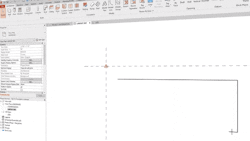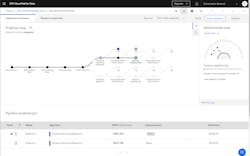The coming automation of retail brick and mortar
Today the average person hardly needs to be reminded that the world is changing rapidly, and that adaptability is a necessity. We all see it around us and feel its impact every day. It’s as though we unconsciously classify trends into one of two lists in our heads, “these are dying” and “these are the future.” Flip phones are dying. Smartphones are the future. Taxis are dying. Ride-share services are the future. Brick-and-mortar retail is dying. Online shopping is the future.
Innovation Amnesia
But then, we tend to see generations go through innovation amnesia. A generation or more ago it was seemingly clear that fresh delivery services (remember the milk man?) were all but dead, while supermarkets were on a roll to the future. Then came the delivery revolution, and today Instacart and Door Dash are growing so fast that it’s those supermarkets whose future is in question.
Brick-and-mortar retail may well be on the verge of its own revolution - in the not-too-distant future its resilience will become apparent. It just needs a smart injection of technology to ensure that it stays on (or returns to) the “these are the future” list.
All retail must move quickly to remain relevant. This is why online shopping has been thriving, even before COVID started keeping people home more often. Faster decision-making is critical to the success of brick-and-mortar retail, and Artificial Intelligence is the key to its implementation. A physical retail location saddled with a glut of last month’s trending items is weighed down in a way a website in communication with an Amazon warehouse will never be. An outdated design that makes a physical store hard to navigate or explore can’t compete with a searchable shopping site.
Digging below the surface, a big part of the problem is that current design processes are slow, cumbersome, and driven almost entirely by intuition rather than data. Don’t get us wrong, intuition is a great complement to data analysis, but with the tools available today relying on intuition is like running a race on one leg.
And so today there’s no excuse for a brick-and-mortar establishment to struggle with issues like these. As we work with more retailers and implement tools like reality capture, digital twins, and retail design automation, we are seeing improved agility and a reduced advantage to faster response times from e-commerce again. Faster decision-making will no longer be monopolized by digital storefronts - if the brick-and-mortar world is willing to invest in digital transformations and develop the advanced analytic systems to successfully exploit them.
At VIATechnik, we are starting to see elements of the brick-and-mortar store of the future, operating today. Clients using reality capture as the foundation of the digital twin of the store layout, and then chronicle each individual shoppers’ trip through the store – what their destination area may have been when they entered; where they lingered unexpectedly to look at something that caught their eye; which displays they simply ignored and walked past; and, in a world still affected by COVID, how they behaved when they encountered another shopper in the aisle.
Now where it could get interesting is compiling that data, through intelligent machine learning platforms such as IBM Watson to sift through it all and identify patterns – maybe even segmenting shoppers based on within-segment similarities of behavior and analyzing their demographics or even their psychographics. By running simulations of how shoppers behave in variously evolved versions of the store’s digital twin, they can identify the incentives and barriers to a successful shopping trip – successful from both the customer’s and the store’s perspective. They can answer questions like:
- What factors are correlated with longer stays in the store – and especially longer-than-planned stays?
- What design elements are related to more spending per trip?
- Which customers are associated with a faster return trip to the same store?
- How does design influence the shopper’s apparent sense of safety, now or in a potential post-COVID future?
In particular, brick-and-mortar retail has often seen its remaining advantage over online shopping is both instant gratification and experiential retail: stores that make products available right then and there, and make visiting fun in and of itself, unrelated to the more functional purposes of the trip. This includes elements like video displays, free samples, end caps that with surprising and intriguing “treasure hunt” items that inspire spontaneous purchases. A leading grocery retailer told us: “Part of the magic that goes into our store design is the specialized knowledge and continued innovation during the course of the project by our merchants in all of the categories… It’s about ensuring that the latest food innovation/trends are incorporated by the time of store opening to serve the needs of our customers.”
Yet as of today this advantage has failed to prevent brick-and-mortar from losing ground to online shopping. This may be the most powerful benefit of the automated design capabilities now available to retailers: to create the new experiential retail experience and the new shopper treasure hunt, relevant for shoppers’ wants and needs today – and to rapidly evolve the design to accommodate evolving wants and needs going forward.
The Road Ahead
Marketing strategists talk about not only creating and leveraging advantages versus the competition, but neutralizing the competition’s own advantages. And so effective use of digital tools must not only elevate the engagement consumers feel with the entertaining side of a store visit, they must enable the store to be as fast, efficient, and cost-effective as online shopping for those who want only to quickly get in, find and purchase what they need, and get out. They must enhance every incentive to visit felt by a shopper and knock down every barrier.
It’s amazing what brick-and-mortar can do when it automates decision making around store design using automation and data. And when the innovation amnesia rolls around, people may even start saying “Brick-and-mortar is the future and online is yesterday’s news.”



